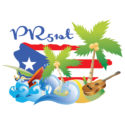Electricity and water are still uncertain in many parts of the Island, but Puerto Rico declared the tourism season open just about one month ago, and visitors to the popular urban tourist areas will enjoy the beauty and warmth of the Island.
NPR wrote that some tourists might feel guilty for enjoying a tropical paradise when so many local residents are still trying to cope with the destruction of Hurricane Maria, but quoted local residents saying that’s the wrong attitude. “You’re doing your part in helping with our recovery,” Jose Izquierdo, executive director of the Puerto Rico Tourism Company, pointed out.
Tourism in Hawaii took off when the Territory of Hawaii became a state. Within a year, visits to the Hawaiian islands had more than doubled, and light manufacturing and construction were also participating in a tourism-fueled boom.
The new state of Puerto Rico could be in the same position. For 2018, even though El Yunque and other less urban tourist destination are not expected to be accessible this year, the Island’s tourism office expects 90% of cruise ships to keep to their anticipated schedules.
Travel writer The Points Guy predicts that tourist visits may be down for 2018, but “savvy travelers will beat the crowds and get to the islands, pumping tourism dollars back into communities that desperately need it.” That’s a current advantage for Puerto Rico compared with Hawaii: less crowding. Surfline echoes these words, saying that the water in the ocean around Puerto Rica is clean and ready to surf… and you can practically have the place to yourself.
Puerto Rico is less expensive.
Puerto Rico will also continue to beat Hawaii on price at it has for some time (maybe since Hawaii was a territory). Travel forums invariably bring this up when comparing the two U.S. tropical paradises. Hotels offer a wide range of prices in both vacation destinations, but overall, Puerto Rico has less expensive accommodations, more free attractions, and more affordable restaurants.
Puerto Rico’s tourism office says there are more than one hundred hotels and four thousand restaurants open for business right now in Puerto Rico. Affordable accommodationsare definitely part of the deal for 2018.
Puerto Rico is closer.
Puerto Rico is less than 1,000 miles from the Mainland, while Hawaii is nearly 2,400 miles from the nearest state. Depending on your starting point, Puerto Rico can be a travel bargain with fewer hours of travel time.
Both Hawaii and Puerto Rico have beaches, museums, golfing, outdoor sports, and shopping to draw tourists. Puerto Rico also has a tropical rain forest, the only one in the United States. For many residents of the mainland U.S., Puerto Rico promises the same exotic beauty as Hawaii, but it’s easier to reach.
Puerto Rico has more room to grow.
Tourism already accounts for 21% of Hawaii’s revenue — and both 2016 and 2017 were record years for Hawaii’s tourist industry. By contrast, tourism brought in just 7% of Puerto Rico’s revenue in the most recent figures. As Puerto Rico rebuilds, keeping tourism in mind could increase the value significantly.
Hawaii is a state.
Puerto Rico welcomes visitors from the states without passports, uses the same currency, and follows the same federal laws. Not all mainland visitors realize this. Hawaii, since it is one of the 50 states, is a reassuring destination. Tourists feel safer than they do when visiting a foreign location.
As a state, Puerto Rico will have the same advantages.
In the past, tourism has been a weaker part of Puerto Rico’s economy than it should have been. Moving toward statehood, Puerto Rico is in a position to aggressively build the tourism industry — just as Hawaii did when it was admitted to the United States.








No responses yet